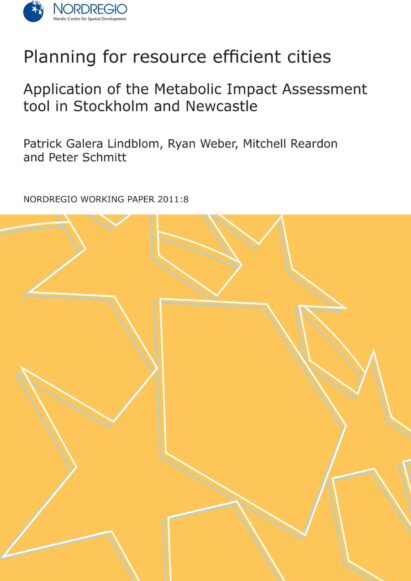Application of the Metabolic Impact Assessment tool in Stockholm and Newcastle. This working paper is based on the results of two case studies completed by Nordregio researchers for the EU FP7 project: Sustainable Urban Metabolism for Europe (SUME).
The working paper presents the so-called Metabolic Impact Assessment (MIA) as an evaluation of two urban development projects: in Stockholm, the first phase of the Stockholm Royal Seaport development, and in Newcastle, England, the development of Newcastle Great Park. A synthesis of the two projects, including their local policy and socioeconomic contexts, are provided to complete a comparative analysis on the “metabolic” performance of each development.
The MIA as a planning and appraisal tool is also evaluated according to experiences obtained during the two assessments. It is compared to the Environmental Impact Assessment (EIA) legislation in Sweden and the UK with a specific focus on the decision making criterion applied in EIA. The goal is to identify potential synergies and prevailing contrasts between EIA and MIA. This provides an ability to ultimately assess the potential of MIA for becoming a mainstream planning tool for assessing resource performance of prospective urban development projects.








